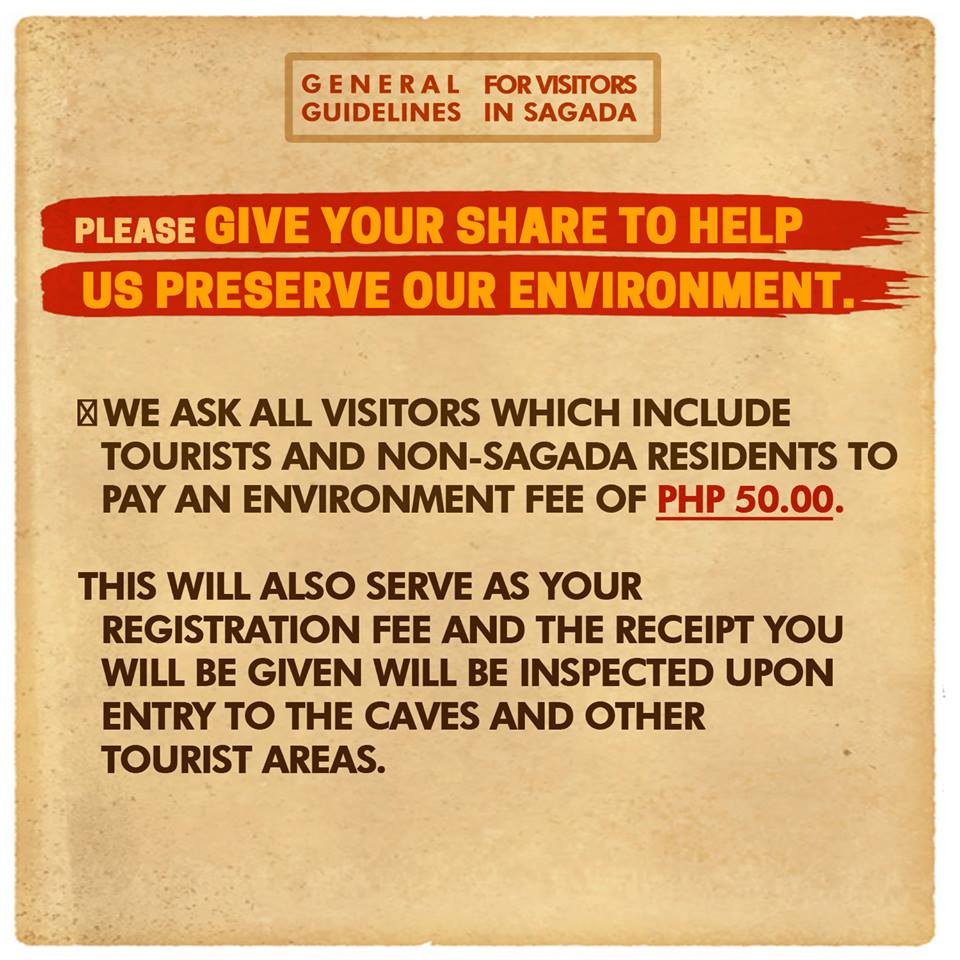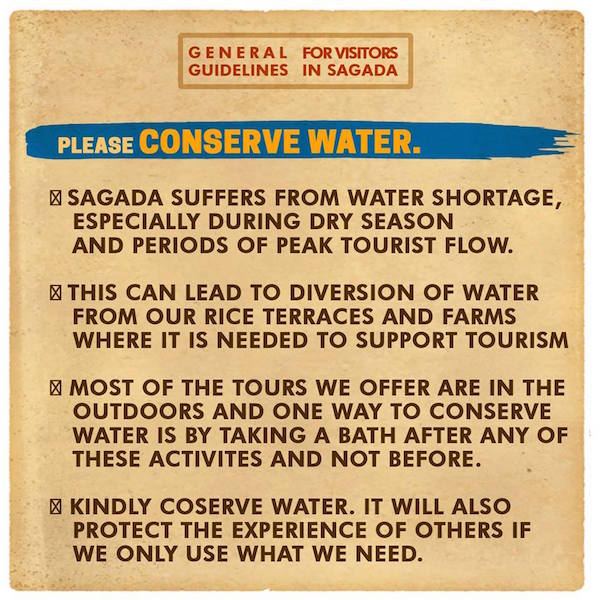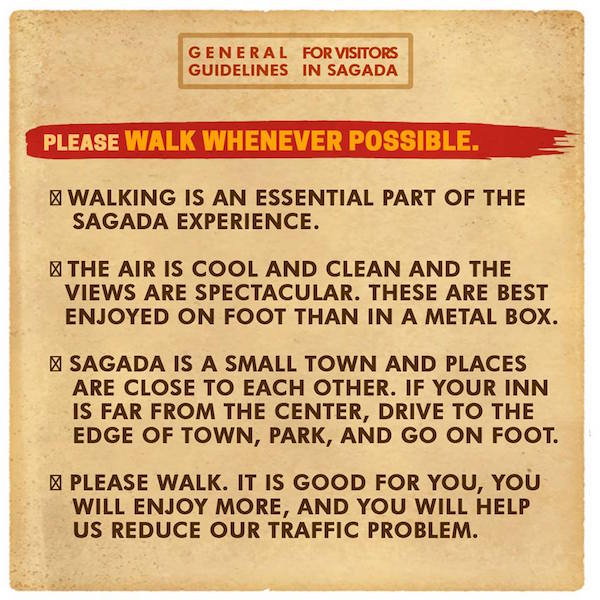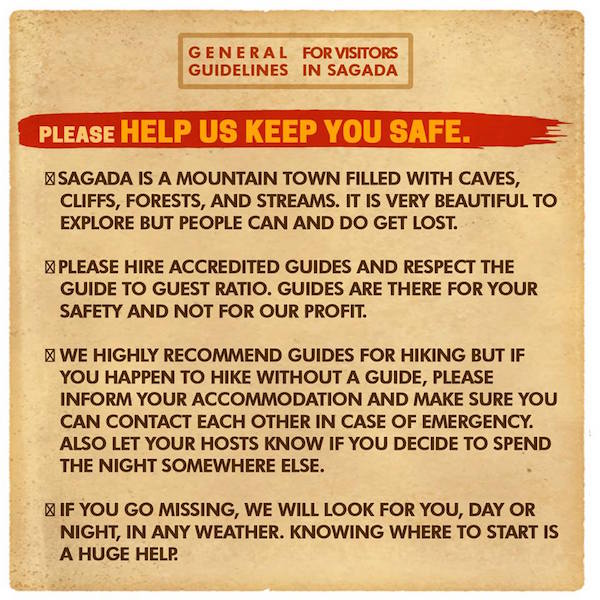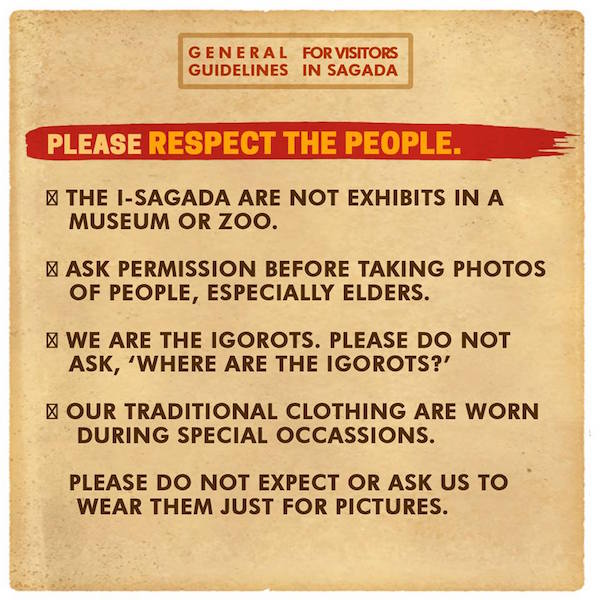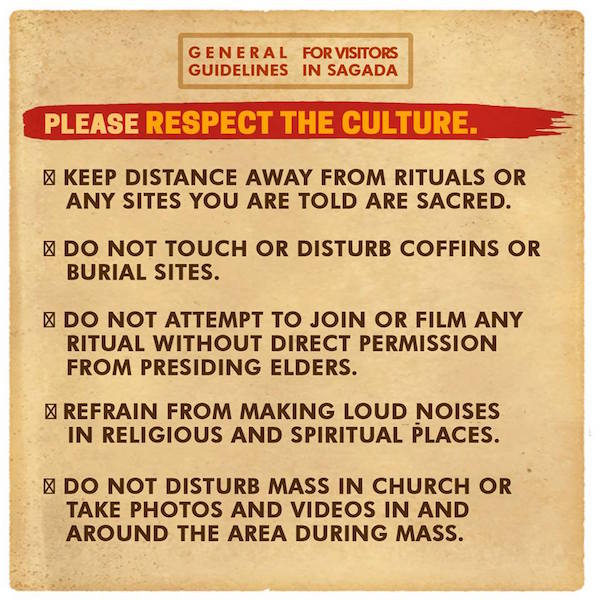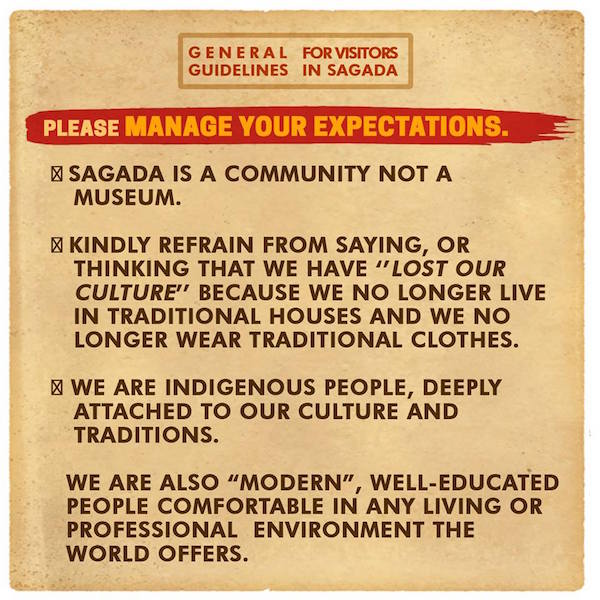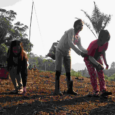With the summer heat already starting to roll in, the mountainous ranges of the North are looking more and more appealing. Sagada, in particular, has always been a popular tourist spot. The Sagada Tourism Office actually records more than a hundred thousand visits per year.
This might seem like a great thing at first, but everything has its downsides. While the high volume of tourists has been beneficial for commercial businesses and job creation within Sagada, it’s also hugely harmed their environment and people alike. In some cases, it has even harmed the tourists themselves.
In line with this was the effort to craft new guidelines. These guidelines identify new rules being applied, as well as instituting reminders on conduct and safety. The shift in perspective of tourism can be credited to Mr. Steve Rogers of Sagada and Ms. Tracey Santiago of the National Commission for Culture and the Arts.
https://www.facebook.com/media/set/?set=a.418371815367378&type=3
The first thing you should know if you plan on making a trip to Sagada is that there is a Php 50 environment fee being applied. This is the usual practice in areas that suffer from the influx of tourists.
Other guidelines which respond to the environment is the need to conserve water. Since water is obviously necessary to sustain the rice terraces, it is the lifeline of the town as a whole. Some ways tourists can be mindful of this is being efficient in washing up and being careful to keep from wasting.
Maintaining the air quality in the area is another priority. The guidelines remind tourists that “walking is an essential part of the Sagada experience.” Since everything is so close to each other, and traffic is worsening even there, walking is truly the best alternative.
These guidelines aren’t just for themselves. They’re to limit the danger and accidents that tourists already get into. It strongly suggests using guides in tours and having contingency plans in case of emergencies.
The next set of guidelines generally talk about treating Sagada with respect. This respect should cover its people and culture. It seeks to remind us that “the I-Sagada are not exhibits in a museum or zoo”, meaning the locals are not displays to be ogled at or treated as objects.
Actual elements of their culture, like burial sites or religious ceremonies, should not be treated as sightseeing. Should tourists wish to ‘experience’ the culture, they can do so at a distance which isn’t intrusive and without the presence of cameras.
We asked Inandako’s BnB for their perspective as locals. According to them, the acts listed in the guidelines are quite prevalent which explains the firmness of the guidelines. They explain that these guidelines “stem from the fact that there have been instances of tourists asking these questions which locals find ignorant and offensive. Igorots have been portrayed in some online material as well as Dep-Ed approved textbooks in the past as people living in trees as well as people who have ‘tails’ due to our indigenous wear.”
They also say that most people don’t know the full story when they come to visit Sagada: “Us Igorots no longer wear our indigenous wear as it is no longer practical […] It is not just for show or pictures which we see is being done in other places such as Baguio and Banaue. These acts are contrary to the values we try to advocate. Our advocacy also applies to several other aspects of heritage, whether tangible or intangible such as dances and rituals; these are not mere performances for the benefit of tourists.”
(IN PHOTOS: Sagada’s Breathtaking Views)
The locals do “try to understand tourists as it may not be their fault so these guidelines are there to break stereotypes and ask for any tourist to be more responsible when they travel to their neighbors, near or far. ”
Do you think tourism in Sagada is becoming a problem? Let us know your side in the comments!

